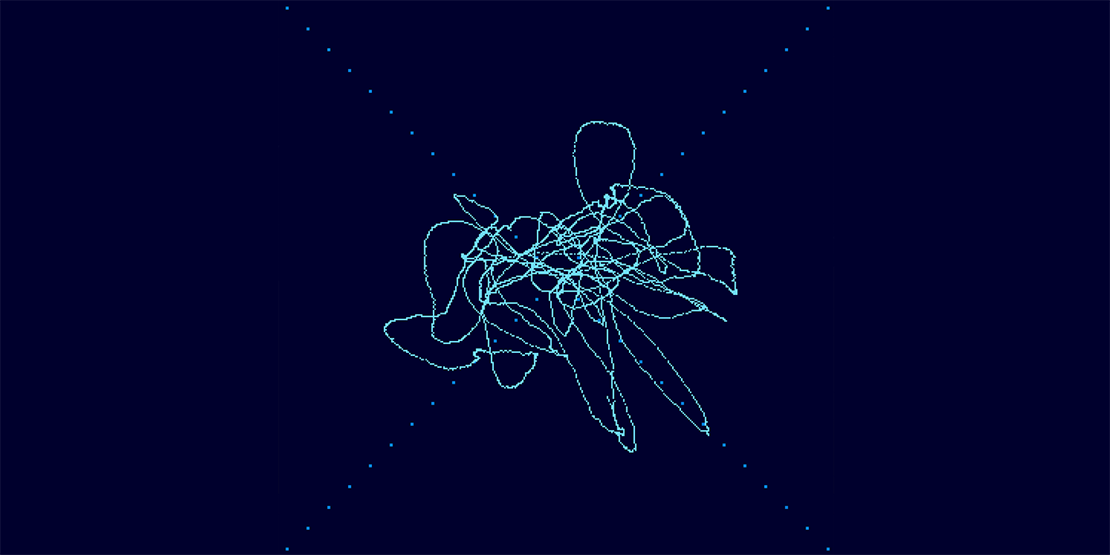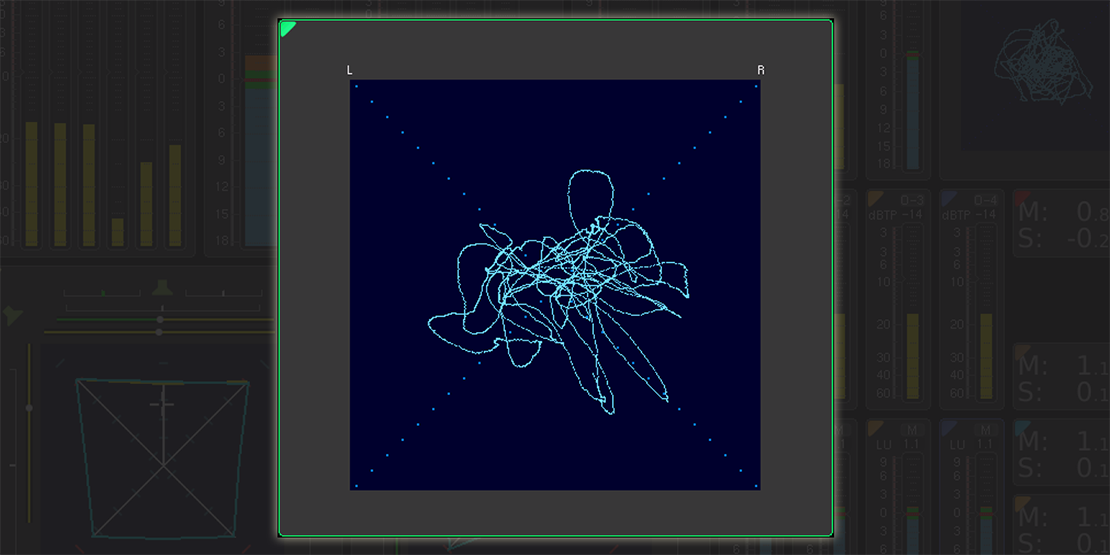
Complete Display
The Audio Vectorscope instrument (VSC) is used to monitor the balance of stereo mixes and it displays the changing phase relationship between a selectable channel pair in real time.
To keep the display readable, and to be able to work with a wide range of levels, the Vectorscope has a build-in Automatic Gain Control (AGC) that will compensate for changes in levels.
Short video clip showing the behavior of the Audio Vectorscope
|
Sign up to learn about new blog posts! |
|
|
The Display
The graphics that is displayed on a vectorscope is also known as a Lissajous display.
Compared to a traditional coordinate system with Left and Right on each axis, the vectorscope representation has been rotated counter-clockwise by 45°, and the point of origin has been centered on the display.
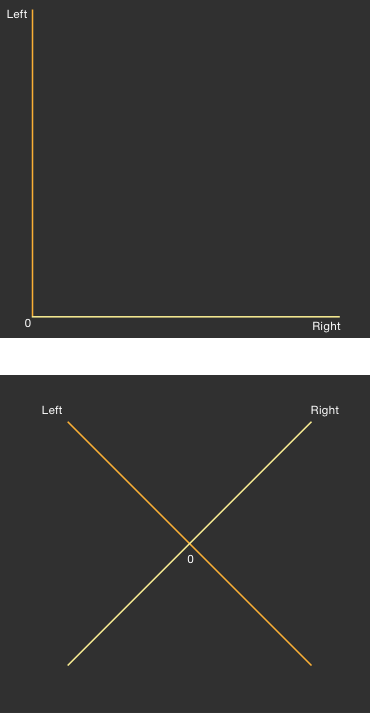
Traditional Coordinate System (above) vs. Vectorscope (below)
A Typical Stereo Mix
Typical stereo mixes with proper base width appear as a well-balanced "ball of wool" as you can see here:
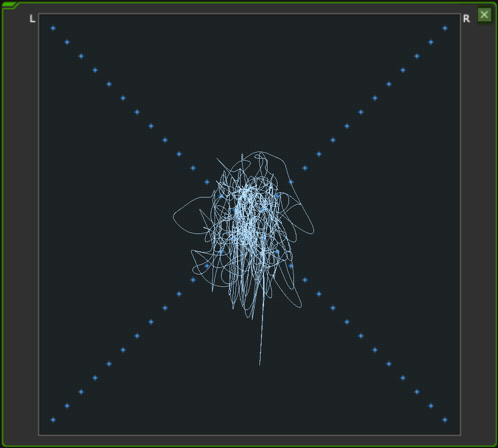
Typical Stereo Mix
The behavior of the constantly moving Lissajous figure and its spreading may give information on e. g. the width of stereo base or if there are comb filter effects or phase shifts or rotations in the signal.
Let's have a look at a couple of examples.
Vertical Pattern: Approaching Mono
Dual-mono signals with exactly the same level in each channel appear as a vertical line with level-dependent deflection.
Generally, vertical patterns mean that left and right channels are similar, so the more vertical the pattern is, the more you approach mono.
Here is an example of how the Lissajous display looks like when the signal is close to mono:
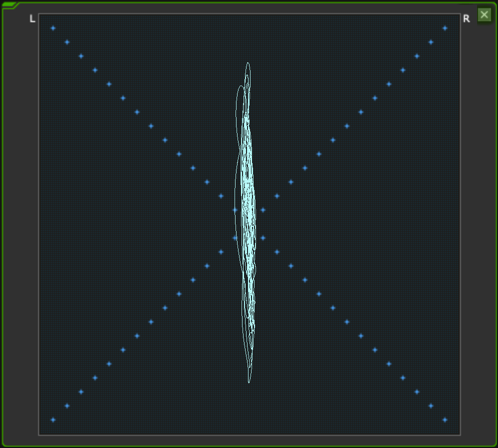
Close to Mono
Sources that would normally be very close to mono are those traditionally recorded in mono and panned center: dialog, lead vocals, lead instruments, bass, kick drum etc.
Adding effects like stereo reverb will of course spread the source in the stereo image.
Watch out for Horizontal Patterns
If the two channels have switched polarity - one channel rotated by 180° or "inverted" - you will see a horizontal line.
In this example I have deliberately inverted one of the channels:
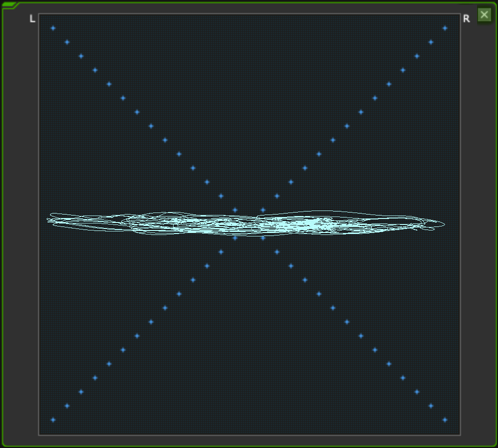
One Channel is Inverted
Generally, horizontal patterns mean that the two channels are very different, which could result in mono compatibility problems, and therefore you should pay attention if you see these patterns.
In many cases, switched polarity occurs due to wrong cabling or if the INV button on a microphone or mixer is unintentionally switched on.
Tilted Stereo Image
Signals that are present only in the left channel are displayed as a line rotated by 45° to the left, while signals present only in the right channel are rotated by 45° to the right.
This is how it looks if the stereo image is out of balance and the signal is mostly in the left channel:
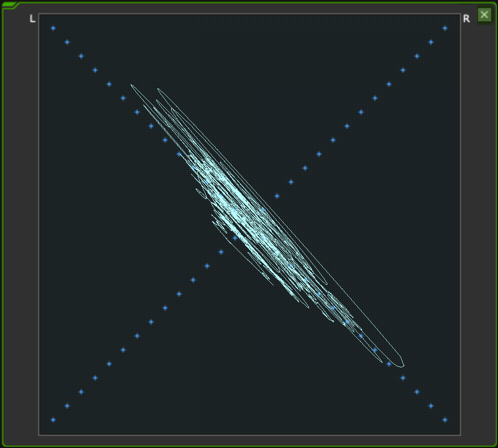
Out of Balance
Surround
For surround channel configurations (4.0 and above), the Vectorscope can be switched to a 4-channel mode.
In this case, the L/R channel pair is displayed only in the two upper quadrants while the two lower quadrants show the phase relationship between the LS and RS channels of the surround signal.
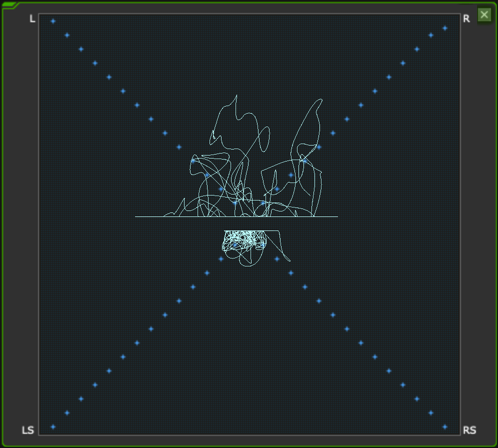
4-Channel Mode
Make it Your Own
As with all RTW instruments there are lots of options to tailor your instrument to your exact needs with regards to colors, size, response times etc.
As an example, I've changed the colors and made the grid line solid:
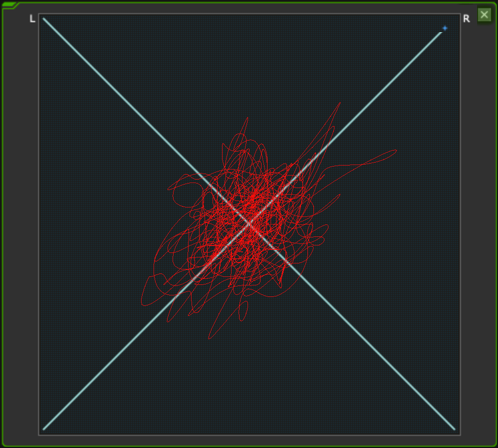
|
Sign up to learn about new blog posts! |
|
|
Practical Use
- Keep an eye on the width and balance of you stereo mix
- Instantly reveal phase problems such as shifts or rotations
- Detect unwanted comb filter effects
- Avoid mono compatibility problems
- Detect unsymmetrical clipping
Technically Spoken
What is required to run the Audio Vectorscope?
- RTW TouchMonitor TM7 or TM9
- Software license SW20006 Premium PPM and Vectorscope
- If you work in surround, you'd also need the software license SW20001 Multichannel Mode
oder
oder
The Audio Vectorscope is also part of the RTW Mastering Tools Software for Mac and PC pPlug-in and standalone application).
VSC - Vectorscope Features
|
|||
| Display Modes: |
|
||
| Input Sources: |
|
||
| AGC: |
|
||

